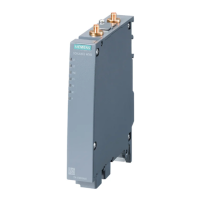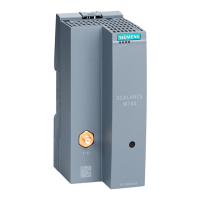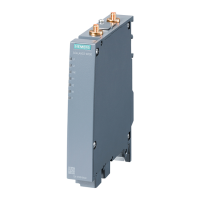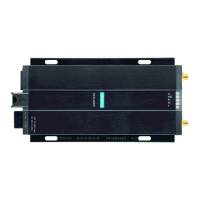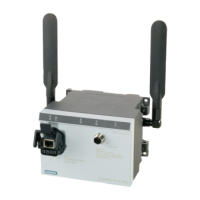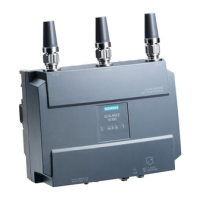Configuring with Web Based Management
6.9 "Security" menu
SCALANCE W780/W740 to IEEE 802.11n Web Based Management
Configuration Manual, 08/2018, C79000-G8976-C267-13
375
different clients, some using "WPA" and others "WPA2". The same encryption method
is set on the clients.
–
Authentication with optional AES encryption. Authentication is set automatically if
iPCF, iPCF-HT or iPCF-MC mode is enabled on the WLAN interface. If you want
encryption with AES, only keys with a 128 bit key length are supported.
●
Encryption protects the transferred data from eavesdropping and corruption. You can
only disable encryption if you have selected "Open System" for authentication. All other
security methods include both authentication and encryption.
●
Select the encryption method. The selection depends on the transmission standard.
–
AES or TKIP is used depending on the capability of the other station.
–
WEP (Wired Equivalent Privacy)
A symmetrical stream encryption method with only 40- or 104-bit long keys based on
the RC4 algorithm (Ron’s Code 4).
–
TKIP (Temporal Key Integrity Protocol)
A symmetrical encryption method with the RC4 algorithm (Ron’s Code 4). In contrast
to the weak WEP encryption, TKIP uses changing keys derived from a main key. TKIP
can also recognize corrupted data frames.
–
AES (Advanced Encryption Standard)
Strong symmetrical block encryption method based on the Rijndael algorithm that
further improves the functions of TKIP.
Note
To provide better protection of your data against attacks, use WPA2/ WPA2
-PSK with
●
Enter a WPA(2) key here. This WPA(2) key must be known on both the client and the
access point and is entered by the user at both ends.
For a key with 8 to 63 characters, you can only use the following readable ASCII
characters: 0x20 - 0x7e.
For a key with precisely 64 characters, you can use the following ASCII characters: 0 - 9,
a - f and A - F.
●
WPA(2) Pass Phrase Confirmation
Confirm the entered WPA(2) pass phrase.
●
Specify the WEP key used to encrypt the data. You define the WEP key on the "Keys"
page.

